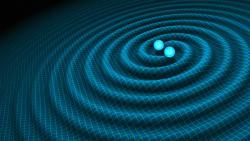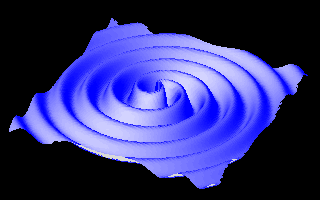Gravitational Waves

orbiting neutron stars
Credit: J Hurt/JPL-Caltech
Gravitational waves are tiny, invisible ripples in space. They travel for huge distances at the speed of light. The waves squeeze and stretch any objects they pass, but only by a tiny amount. The strongest waves come from events like supernovae, merging neutron stars, and colliding black holes.
Albert Einstein used maths to predict the existence of gravitational waves in 1916. He showed how violent events between massive objects would cause ripples to travel in all directions through the fabric of space-time. You can think of gravitational waves as like the ripples you see in water when something disturbs the surface. The idea of space-time combines the Universe and time together in 3 dimensions.
On 14th September 2015, scientists announced they had the first evidence for gravitational waves. This was nearly 100 years after Einstein published his work. The waves came from two black holes merging. Scientists think these black holes were about 29 and 36 times the mass of the Sun. They also worked out that the event took place over 1.3 billion years ago. This means the waves travelled through space for 1,300 million years before they got to Earth.

neutron stars generating gravitational waves
Credit: NASA/LISA
It took so long to find gravitational waves because they are very weak. This makes them very hard to detect. To find them, scientists use laser interferometers like LIGO. This lets them measure tiny changes to the distance between two detectors, made as the wave passes through. A laser beam shines from one detector to the other. As a wave passes through the detector, it squeezes and stretches the space. As it squeezes the space, the space gets a bit smaller. As it stretches the space, the space gets a bit bigger. LIGO is so sensitive, it can measure a change which is 10,000 times smaller than an atomic nucleus!
The first detections were made by the LIGO and Virgo Collaborations. Right now, several new gravitational wave detectors are being made. LISA will be the first gravitational wave detector in space.

